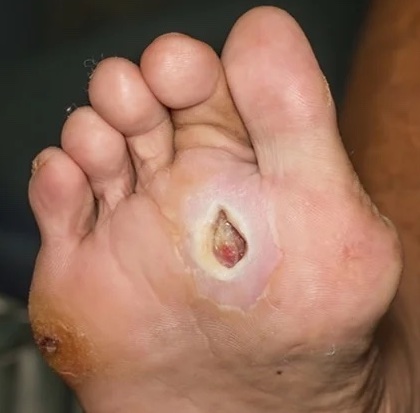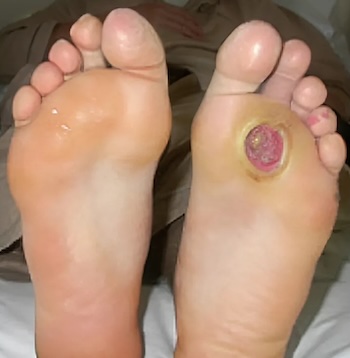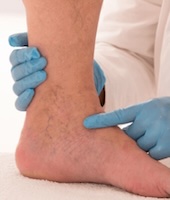Diabetic foot ulcers are open sores or wounds commonly located on the bottom of the foot. Ulcers can result from a loss of feeling (numbness) and/or decreased circulation in the foot.
Feeling pain helps protect the skin from injury. Diabetics with loss of feeling often develop blisters from shoe pressure or notice blood on a sock because of a roofing nail in their shoe. It's extremely important for all diabetics to inspect their feet daily for signs of irritation following a basic diabetic foot care protocol.
Adler Podiatry Clinic is currently enrolling patients in Diabetic Foot Ulcer (DFU) and Venous Leg Ulcer (VLU) Research Studies utilizing medications and techiques to improve your healing.


